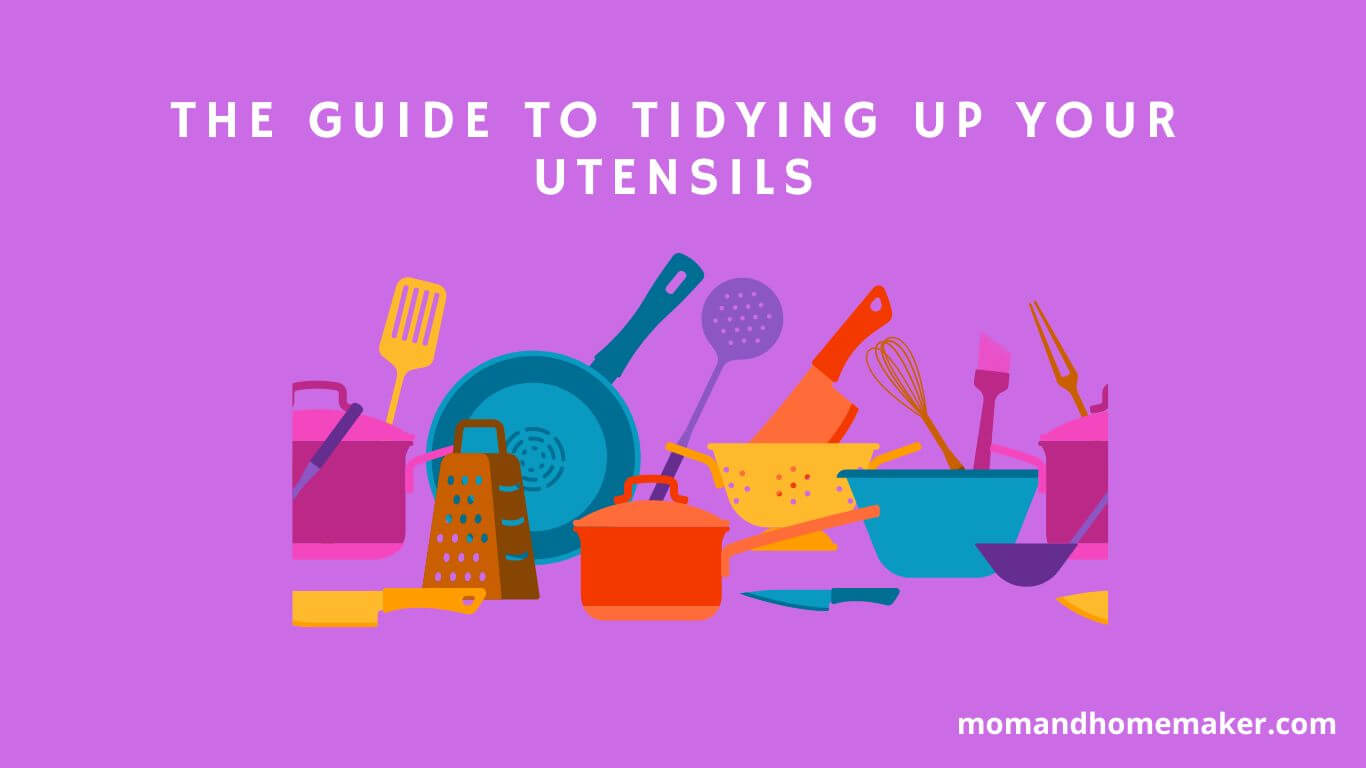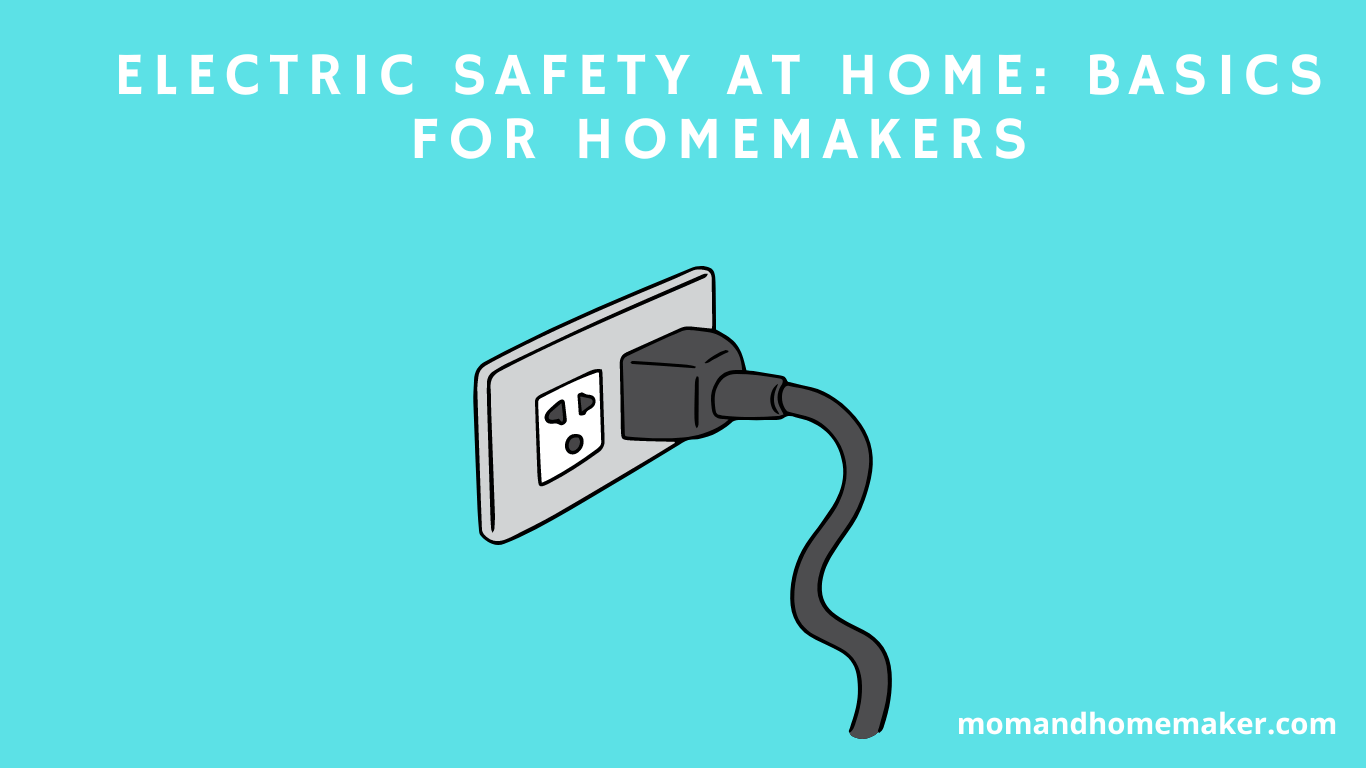We all have that one messy drawer in our kitchen filled with utensils of every shape and size. A spatula here, a whisk there, and a jumbled mess of measuring cups that always seem to disappear when we need them the most. With a little organization and some simple tips, you can transform your utensil chaos into an orderly and functional space.
In this ultimate guide, we’ll provide tips and tricks for organizing your utensils in a way that maximizes space and efficiency. Whether you have a small apartment kitchen or a sprawling culinary workspace, these methods will help streamline your cooking process and make meal preparation a breeze. So let’s get started on achieving the clutter-free kitchen of our dreams.
Table of Contents
Tips And Tricks For Keeping Your Utensils Tidy
1. Assessing Your Utensil Needs
Take a moment to think about the types of meals you typically prepare and which utensils are essential for those dishes. Do you really need ten wooden spoons when one or two will suffice? Once you’ve identified your essential utensils, it’s time to tackle the excess. Take everything out of the drawer and lay it on a flat surface.
Begin sorting through each item, asking yourself if it’s necessary or if it can be donated, recycled, or thrown away. Be honest with yourself – if you haven’t used that avocado slicer in over a year, it may be time to say goodbye.
Decluttering can be overwhelming, but remember that less is often more when it comes to kitchen organization. By streamlining your collection of utensils, you’ll not only save space but also make cooking more efficient and enjoyable.
2. Sorting And Decluttering
Sorting and decluttering your utensils is a crucial step towards a more organized kitchen. As the saying goes, ‘a place for everything, and everything in its place.’ This rings particularly true when it comes to utensils, which can easily become scattered and disorganized without proper attention.
To begin the sorting process, start by laying out all of your utensils on a flat surface. Take note of any duplicates or items that you no longer use or need. These can be set aside for donation or disposal.
Once you have narrowed down your collection to only necessary items, it’s time to consider their storage. Consider the frequency with which you use each item and assign them designated spots accordingly. For example, frequently used items should be stored in easily accessible locations while less commonly used items can be stored in less convenient areas.
Keep reading to learn how to group your utensils based on function for an even more efficient kitchen setup.
3. Categorizing Your Utensils
Group similar items together. For example, separate knives from spoons and forks. Once you have categorized your utensils, it’s time to evaluate each group’s size and importance. Consider how often you use each item and its functionality in the kitchen. Based on this evaluation, determine which items are necessary to keep and which ones can be discarded or donated.
After deciding which utensils to keep, arrange them in a way that makes sense for your routine. Place frequently used items in easily accessible areas, like a drawer near the stove or countertop holder. Less commonly used tools can be stored away in a cabinet for safekeeping.
Here are three tips to consider when categorizing your utensils:
- Group similar items together.
- Evaluate each group’s size and importance.
- Arrange the utensils based on the frequency of use and accessibility.
With your utensils now categorized, it’s time to move on to choosing the right storage solutions for your space.
4. Choosing The Right Storage Solutions
Assess your available space and create a plan. Consider using wall-mounted racks or magnetic strips if you’re short on drawer space. Think about the types of utensils you have and how they can be stored efficiently. For example, use a knife block for knives and a utensil holder for frequently used items like spoons and spatulas. Don’t forget to consider the size of your utensils when choosing storage solutions – oversized tools may require larger compartments or hanging hooks.
Finally, invest in high-quality storage solutions that are durable and easy to clean. This will help keep your kitchen organized for years to come.
5. Drawer Dividers And Inserts
Drawer dividers are a great way to keep your utensils organized. They come in different materials, such as bamboo or plastic, and can be easily customized to fit the size and shape of your drawer. Not only do they save space, but they also prevent your utensils from getting tangled with each other.
Another option is drawer inserts. These are similar to dividers but have compartments for specific utensils, such as knives or spoons. Inserts are especially helpful if you have a large collection of utensils and want to keep them separated by type.
Overall, using drawer dividers or inserts is an excellent way to tidy up your utensil drawer. They make it easier to find what you need quickly and efficiently while maintaining a clean and organized space.
- Bamboo Drawer Dividers
- Plastic Drawer Dividers
- Knife Block Insert
- Spoon Tray Insert
- Utensil Organizer Insert
6. Hanging Racks And Hooks
It can be frustrating to find the right utensil in your kitchen drawer especially when you’re in the middle of cooking a meal. One solution to this problem is hanging racks and hooks. By using these tools, you can keep your utensils organized and easily accessible.
Hanging racks and hooks come in a variety of sizes and styles, so it’s important to choose ones that fit your needs. For example, if you have limited counter space, a wall-mounted rack might be the best option for you. If you have a lot of utensils, consider getting multiple hooks or a larger rack.
To help you decide which hanging rack or hook is right for your kitchen, here’s a comparison table:
| Hanging Rack | Hook |
|---|---|
| Takes up more space | Takes up less space |
| Can hold multiple utensils | Holds one utensil at a time |
| Usually mounted on a wall or ceiling | Can be mounted anywhere |
With this information in mind, you can make an informed decision about which hanging solution will work best for you. Once you’ve chosen your rack or hook, it’s time to start organizing! Sort your utensils by type (e.g. spatulas, ladles) and hang them accordingly. This will not only make it easier to find what you need but also give your kitchen an organized and professional look.
7. Magnetic Strips And Knife Blocks
I’m sure everyone has experienced the struggle of trying to organize their kitchen utensils. Thankfully, magnetic strips and knife blocks make it easy.
They offer several advantages, such as easy access to your utensils and more counter space.
Installation is also a breeze. You just need to make sure you’re placing them on a surface that can handle the weight of the utensils.
Cleaning them is relatively straightforward. All you need to do is wipe them down with a damp cloth and they’ll be good as new.
Advantages
Imagine walking into your kitchen and seeing all of your knives neatly organized and displayed on a magnetic strip or knife block. Not only does it make for a visually appealing display, but it also has practical advantages.
Having your knives easily accessible and in one place saves time when preparing meals, as you don’t have to rummage through a cluttered drawer searching for the right tool. Keeping knives off of countertops reduces the chance of accidents or injury.
Magnetic strips and knife blocks are not only beneficial for organizing your utensils, but they also help extend their lifespan. By storing knives properly, you reduce the chances of them becoming dull or damaged over time. The blades are less likely to come into contact with other utensils in a drawer or be exposed to moisture that can cause rust.
Proper storage ensures that your knives stay sharp and ready for use whenever you need them. Investing in a magnetic strip or knife block is a practical decision that will enhance both the functionality and appearance of your kitchen. Not only will it save you time while cooking, but it will also protect your utensils from damage and help them last longer.
By having a designated spot for your knives, you’ll never again have to dig through cluttered drawers or worry about misplaced tools during meal prep.
Installation
One of the best things about these storage solutions is how easy they are to install. Magnetic strips can be mounted on any flat surface with screws or adhesive tape. Knife blocks, on the other hand, simply need to be placed on a countertop or secured to a wall.
When installing a magnetic strip, it’s important to make sure it’s securely fastened to the wall. The last thing you want is for your knives to come crashing down mid-prep. Generally, screws are more secure than adhesive tape, but if you’re renting or not comfortable with drilling holes in your walls, tape can be a viable option.
Knife blocks are even easier to install – just find a flat surface and place it there! Some knife blocks come with rubber feet to prevent slipping and protect your countertops from scratches. If you prefer a wall-mounted knife block, make sure it’s properly secured so that it doesn’t fall off the wall.
By properly installing your magnetic strip or knife block, you’ll ensure that your knives are safely stored and easily accessible whenever you need them. Plus, once everything is set up and organized neatly, your kitchen will look even more inviting and functional for all those who enter its doors.
Cleaning
Just like any other kitchen tool or accessory, these storage solutions require regular cleaning to maintain their effectiveness and hygiene. For magnetic strips, simply wipe them down with a damp cloth or sponge to remove any dust or debris.
If your strip is made of stainless steel, you can use a stainless steel cleaner for an extra shine. Be sure to dry the strip thoroughly after cleaning to prevent rusting. Knife blocks can accumulate food particles and bacteria over time, so it’s important to clean them every few weeks.
To do this, remove all the knives from the block and turn them upside down over a trash can to shake out any loose particles. Then wipe down the block with a damp cloth and mild soap, taking care not to get water inside the knife slots. Allow the block to air dry completely before returning the knives.
By keeping your magnetic strips and knife blocks clean, you’ll ensure that they continue to function properly and protect your knives from damage or contamination. Maintaining a clean and organized kitchen will make meal prep even more enjoyable for both you and anyone else who needs to use your space.
8. Labeling And Color Coding
This may seem like a minor detail, but it can make a big difference in the efficiency of your kitchen. By labeling each drawer or container with its contents, you will be able to quickly find what you need without wasting time searching through cluttered drawers.
Similarly, by color coding your utensils based on their use (such as red for cooking utensils and blue for baking utensils), you can easily grab what you need without having to dig through a jumbled mess.
Labeling and color coding also help to keep everyone in your household on the same page when it comes to organization. By clearly marking where everything belongs, there will be no confusion about where something should go after it’s been used.
This means that even guests or new members of the household will be able to navigate your kitchen with ease. Creating a utensil station is the final step in achieving ultimate organization in your kitchen. This involves designating one area of your kitchen specifically for utensils and ensuring that everything has its own place within that area.
You can do this by using drawer dividers or containers, or by installing a hanging rack for frequently used items. Whatever method you choose, make sure that it’s easily accessible and that everyone in your household knows where everything goes.
As you work towards creating the ideal utensil station, keep in mind that organization is an ongoing process. It requires regular maintenance and upkeep to ensure that everything stays neat and tidy. But with these tips in mind, you’ll be well on your way to becoming a master at tidying up your utensils.
9. Creating A Utensil Station
As you embark on the journey to organize your utensils, creating a designated station for them is key. Think of it as building a home for your culinary companions, a place where they can rest and be easily accessed when needed.
A well-organized and clutter-free station will not only make cooking more efficient but also elevate the aesthetic appeal of your kitchen. To create an effective utensil station, consider the following tips:
- Choose a convenient location: Select an area that is easily accessible while cooking.
- Determine storage needs: Depending on the number and types of utensils you have, decide what type of storage containers or organizers would work best.
- Keep it clean and simple: Avoid overcrowding by only keeping essential utensils in the station. Use drawer dividers or small baskets to keep things tidy.
- Label everything: If you have multiple people using the kitchen, clearly label each container or section to avoid confusion.
- Add personal touches: Incorporate decorative elements like flowers or a framed recipe that inspires you.
Remember, creating a utensil station is just one step in achieving an organized kitchen. But with dedication and the right mindset, you can transform your cooking space into an oasis of efficiency and style.
10. Maintaining Your System
This means consistently putting utensils back where they belong after each use and taking the time to regularly declutter any items that have accumulated.
One helpful tip for maintaining your system is to set aside a specific time each week for tidying up. This could be as simple as spending 10 minutes every Sunday evening putting away any stray utensils or wiping down surfaces. By making this a regular habit, you’ll avoid letting clutter build up over time.
Another key aspect of maintaining your system is regularly reassessing whether your current setup is working for you. Are there any utensils that are consistently getting lost or causing frustration? Is there a better way to organize certain items? By remaining open to making adjustments, you’ll ensure that your system stays functional and efficient over time.
| Utensil | Storage Location |
|---|---|
| Knives | Magnetic strip |
| Spoons | Drawer organizer |
| Forks | Utensil holder |
| Spatulas | Ceramic crock |
As you can see from the table above, having a designated storage location for each type of utensil can help keep everything organized and easy to find. Consider implementing a similar setup in your own kitchen.
11. Cleaning And Sanitizing Your Utensils
Cleaning and sanitizing your utensils is an essential step in maintaining a healthy and hygienic kitchen. Neglecting this step can lead to cross-contamination of food and harmful bacteria growth. To ensure that your utensils are properly cleaned and sanitized, follow these simple tips.
First, always wash your utensils with hot, soapy water after each use. Use a brush or sponge to scrub away any residue or stains. Rinse thoroughly with hot water and dry completely before storing.
Also, sanitize your utensils by either boiling them for 10 minutes or soaking them in a solution of one tablespoon of bleach per gallon of water for at least one minute. Allow the utensils to air-dry completely before storing them.
Lastly, store your clean and sanitized utensils in a dry and clean drawer or container to prevent dust or dirt from accumulating on them.
- Use separate cutting boards for raw meats and vegetables
- Clean wooden utensils with vinegar instead of soap to prevent drying out
- Replace any chipped or cracked utensils immediately
- Rotate frequently used utensils to avoid wearing out one specific item
Taking the time to properly clean and sanitize your utensils can make all the difference in maintaining a safe and healthy kitchen environment. So make it a habit to follow these simple steps every time you use your kitchen tools.
As you become more experienced in cooking, you may find that certain types of utensils work better for you than others.
12. Upgrading Your Utensil Collection
Let’s start with organizing your utensils – it’s important to have a system so you can easily access what you need. When it comes to choosing utensils, look for ones that are versatile and can be used for multiple tasks.
For storage, there are lots of innovative options out there that can help keep your kitchen looking neat and tidy. I’d recommend having a designated drawer or cupboard for all of your utensils – it’ll make your life so much easier.
And don’t forget about the little things – like hooks and wall racks – they can really help keep your utensils organized. Get creative with how you store your utensils.
13. Choosing Versatile Utensils
A versatile utensil can be used for multiple purposes and save you time and space in the kitchen. Look for utensils that can be used for stirring, flipping, scraping, and serving. One great example of a versatile utensil is a silicone spatula. It can be used for mixing batter, scraping bowls clean, and even flipping pancakes or eggs.
Another option is a pair of tongs with a locking mechanism that can be used for grilling, serving salads, and even tossing pasta.
When choosing new utensils, think about the types of cooking you do most often and what types of foods you prepare. Stainless steel may be a good choice for durability and versatility while silicone or nylon may be better suited for non-stick cookware.
By selecting versatile utensils that can perform multiple tasks efficiently, you’ll not only save money by not having to purchase many different items but also make your cooking experience more enjoyable by having the right tools at hand whenever you need them!
Conclusion
In conclusion, tidying up your utensils is a task that can bring order and efficiency to your kitchen. By assessing your needs, sorting and decluttering, categorizing your utensils, and choosing the right storage solutions, you can create a system that works for you.
Remember to maintain your system by regularly cleaning and sanitizing your utensils. By upgrading your utensil collection and implementing tips and tricks for keeping them tidy, you will not only create a functional kitchen space but also bring joy into your daily routine.
















